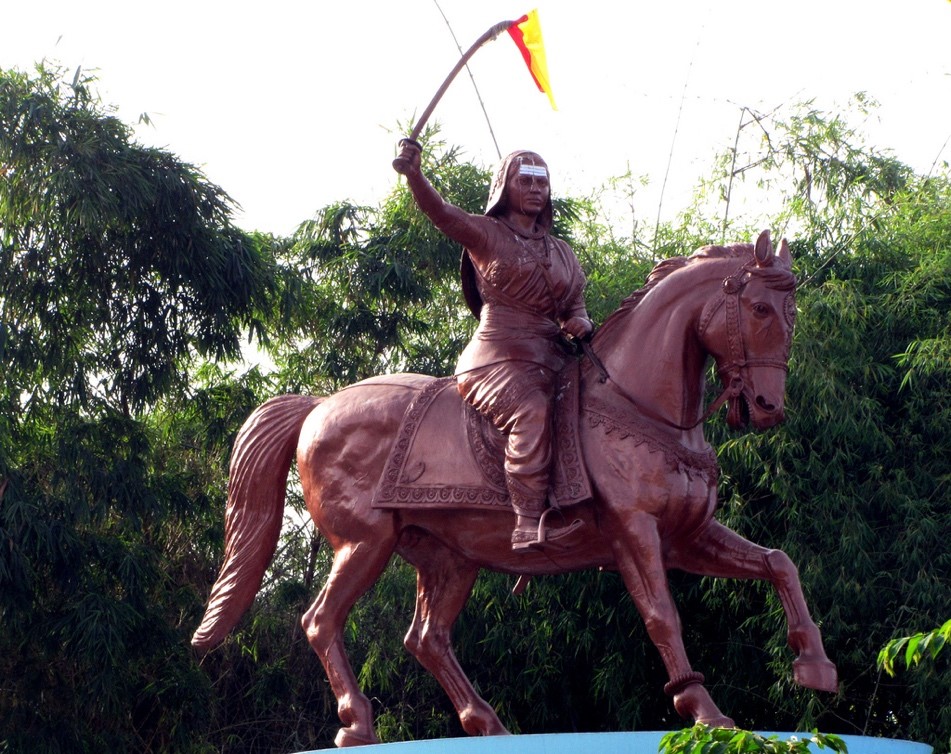Description

Disclaimer: Copyright infringement not intended.
Context
- Commemorating 200 years of Rani Chennamma’s rebellion against the British East India Company, several social groups across the country, including Act Now for Harmony and Democracy (ANHAD) and the National Federation of Indian Women (NFIW), organized a national campaign, Naanoo Rani Chennamma (I am Rani Chennamma too) on February 21.
- The campaign, began from Kittur, the site of Chennamma’s resistance, called on women to rise against patriarchal, anti-democratic and casteist forces in the country.
Details
Rani Chennamma's revolt against the British in 1824 served as a catalyst for a national campaign for women's rights in India.
Goals of the Campaign
- The "Naanoo Rani Chennamma" campaign sought to release the "Kittur Declaration," emphasizing the fighting spirit of Indian women and demanding equal rights and representation.
- It aimed to mobilize women across the country to participate in the rally and raise awareness about gender inequality and social justice issues.
- The campaign focused on broader systemic issues such as poverty eradication and quality education, recognizing the intersectionality of women's rights with larger social and political challenges.

About Kittur Chennamma
- Kittur Chennamma, a prominent figure in Indian history, led a valiant resistance against the British East India Company in the early 19th century.
Early Life:
- Kittur Chennamma was born on October 23, 1778, in Kakati, a village in present-day Belagavi District, Karnataka.
- She belonged to the Lingayat community and received training in various martial arts from a young age.
- At the age of 15, she married Raja Mallasarja of the Desai family.
Rebellion Against the British:
- After the death of her husband in 1816 and her son in 1824, Kittur Chennamma adopted Shivalingappa as the heir to the throne of Kittur.
- The British East India Company opposed her decision and ordered the expulsion of Shivalingappa, leading to tensions between Kittur and the Company.
- Despite Chennamma's efforts to seek recognition of Shivalingappa's rule through diplomatic means, war broke out between Kittur and the British in 1824.
- In the initial phase of the conflict, Kittur forces, led by Chennamma and her lieutenant Amatur Balappa, achieved significant victories, including the death of the British political agent St John Thackeray.
- However, despite releasing British hostages in an attempt to negotiate peace, the conflict escalated.
- In the second assault, Kittur Chennamma fought fiercely but was ultimately captured by the British in 1824.
- She was imprisoned at Bailhongal Fort, where she died on February 21, 1829, due to deteriorating health.
- Sangolli Rayanna, Chennamma's deputy, continued the resistance until his capture and execution in 1829.
Legacy:
- Kittur Chennamma's legacy as a courageous leader who defied colonial rule continues to be celebrated in Karnataka.
- Her victory in the initial phase of the rebellion is commemorated annually during the Kittur Utsava held on October 22–24.
- Several books and memorials, including statues at prominent locations like the Indian Parliament Complex in New Delhi, honor her memory and contribution to Indian history.

Conclusion
- Rani Chennamma's bravery and defiance against colonial oppression continue to inspire women to stand up for their rights and participate in public life.
- By commemorating her legacy, the campaign aimed to empower women and advocate for a more inclusive and equitable society.
- Chennamma's story serves as a reminder of the importance of courage, resilience, and leadership in the struggle for justice and equality.
|
PRACTICE QUESTION
Q. Kittur Chennamma remains an iconic figure in the Indian independence movement and a symbol of resistance against colonial oppression. Discuss. (250 words)
|







